歌碑22「つまま」-雨晴観光駐車場Monument No.22 “Ttsumama Tree” -Amaharashi Tourist Parking Lot
2022年09月22日
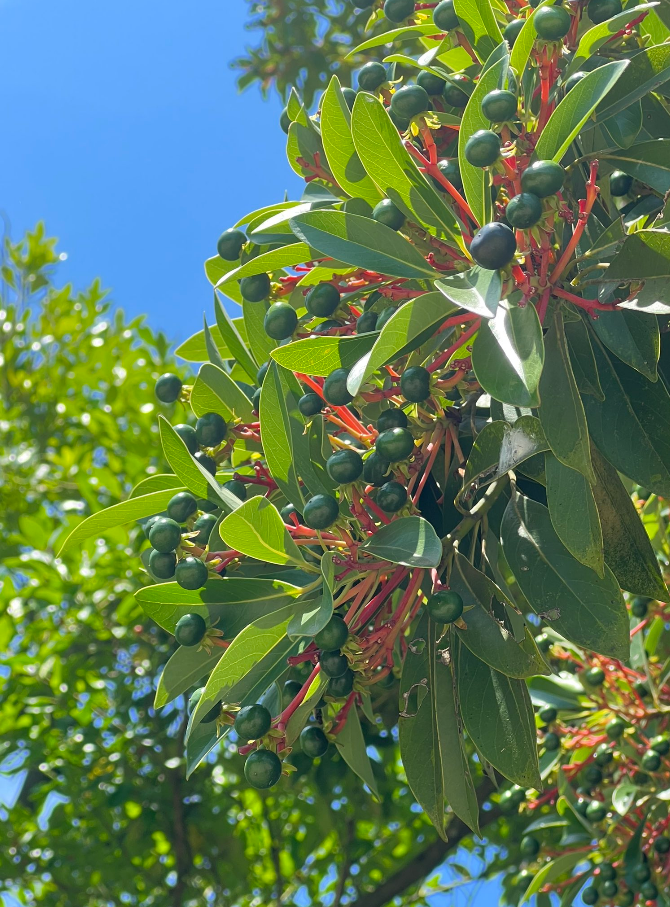
家持自ら「樹の名は「都万麻(つまま)」」と説明を付けているように、「つまま」は都人にとっては聞き慣れない植物名だったのだろう。
In the poem, the poet deliberately uses the local name for the tree—tsumama—which would have been unfamiliar to people living in the capital.
![万葉歌めぐりの旅[Man'yōshū Literary Pilgrimage]](https://www.manreki.com/manyo-songs/images/common/pic_logo.svg)



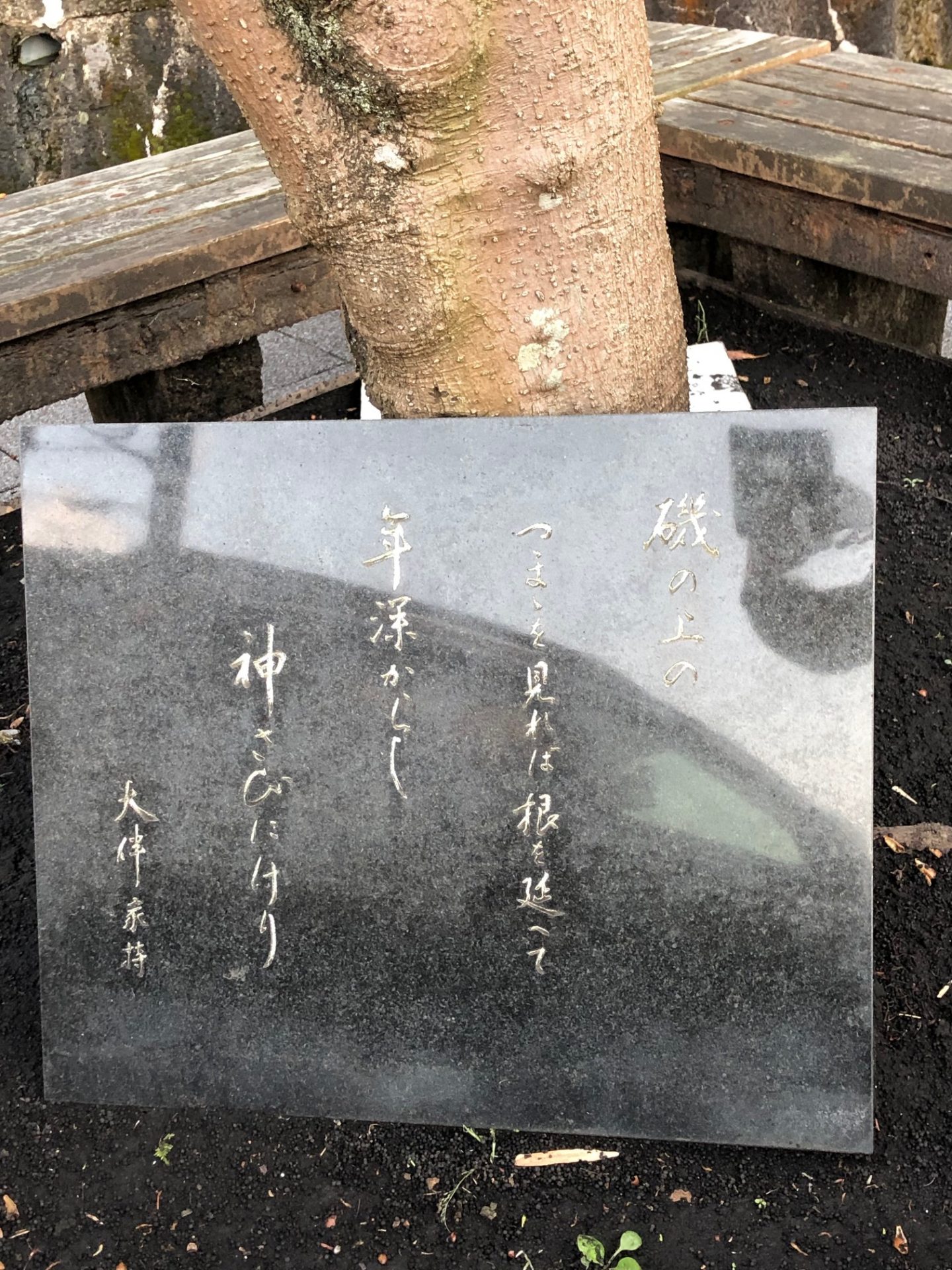
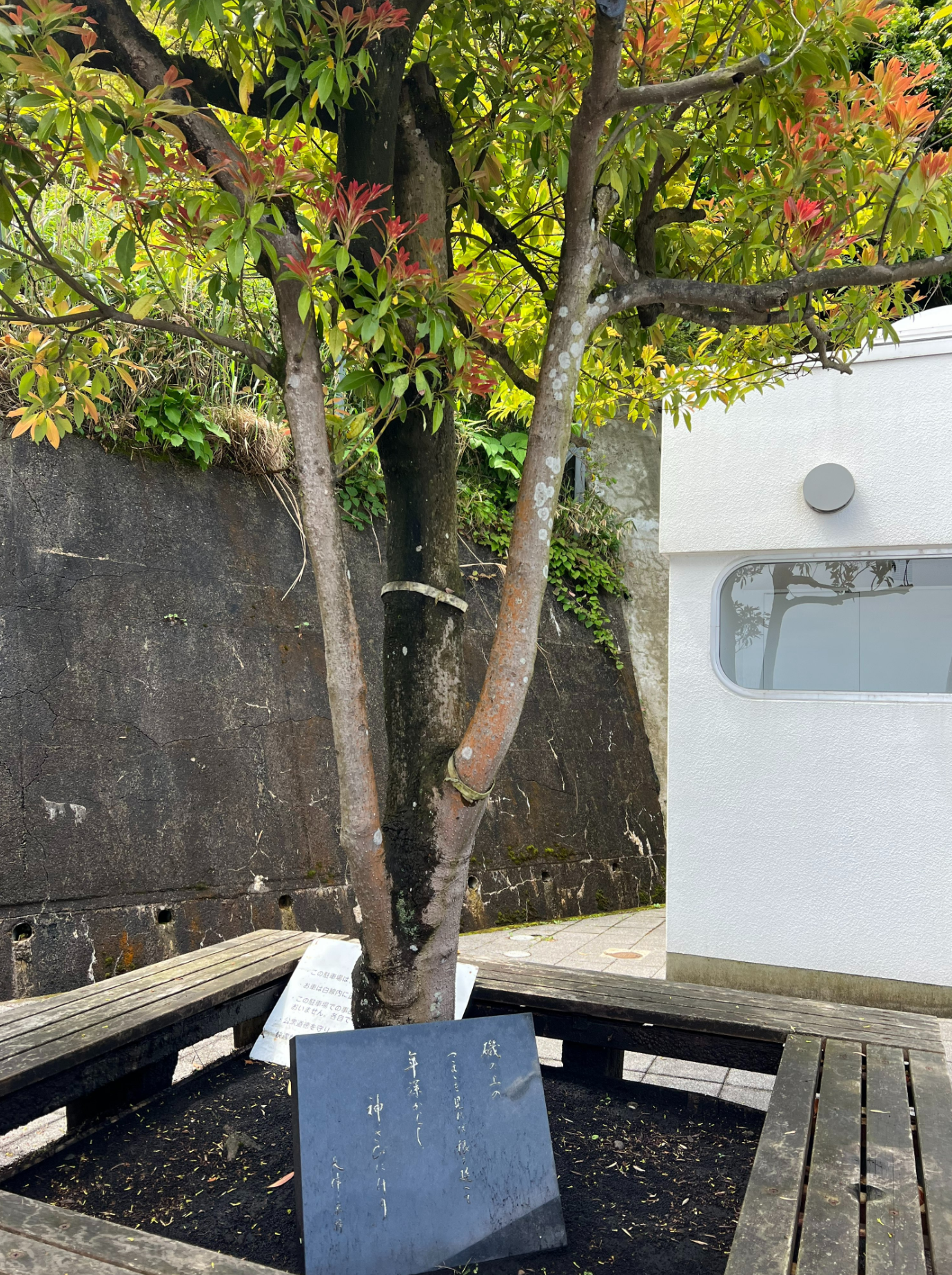
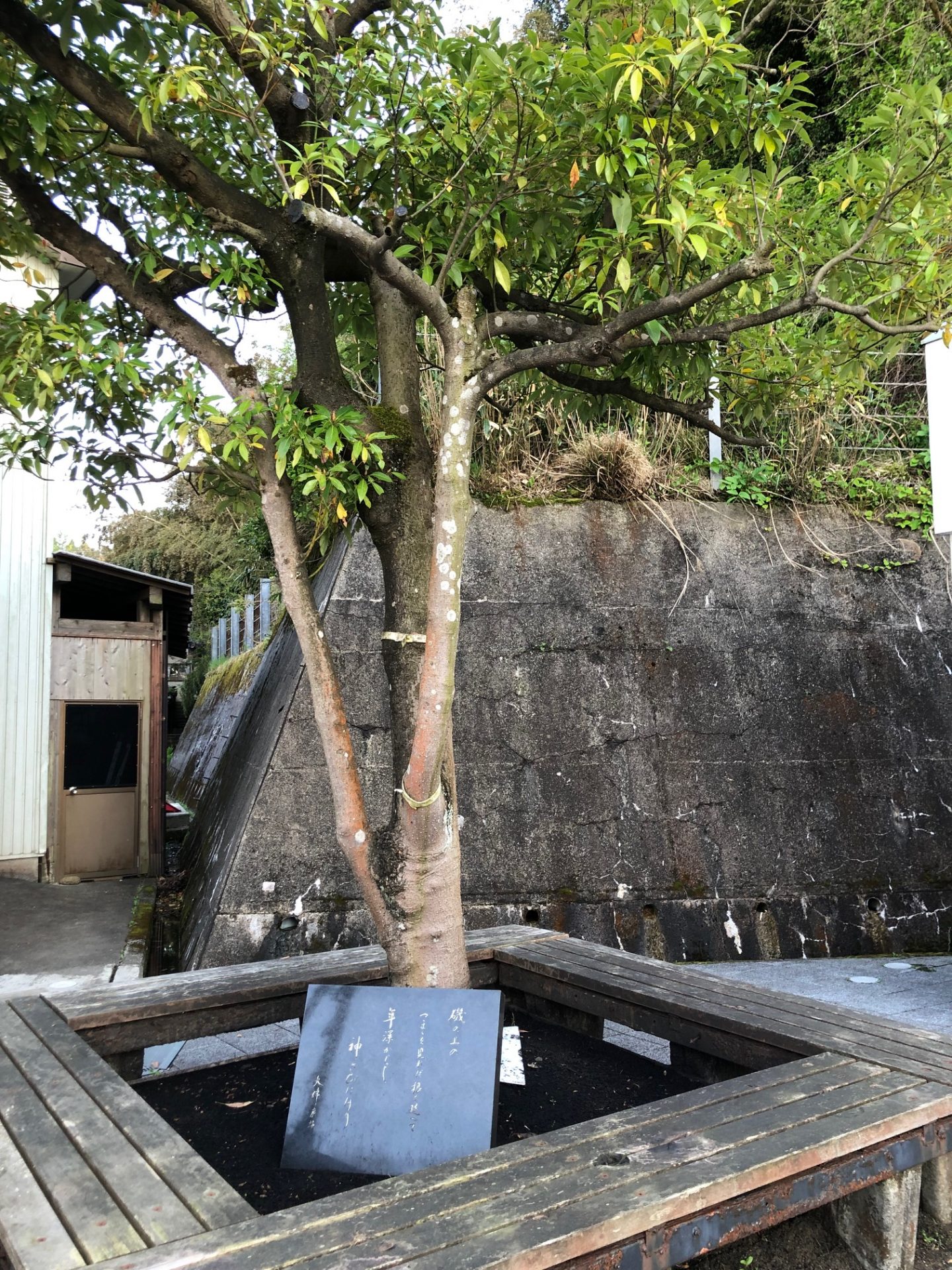
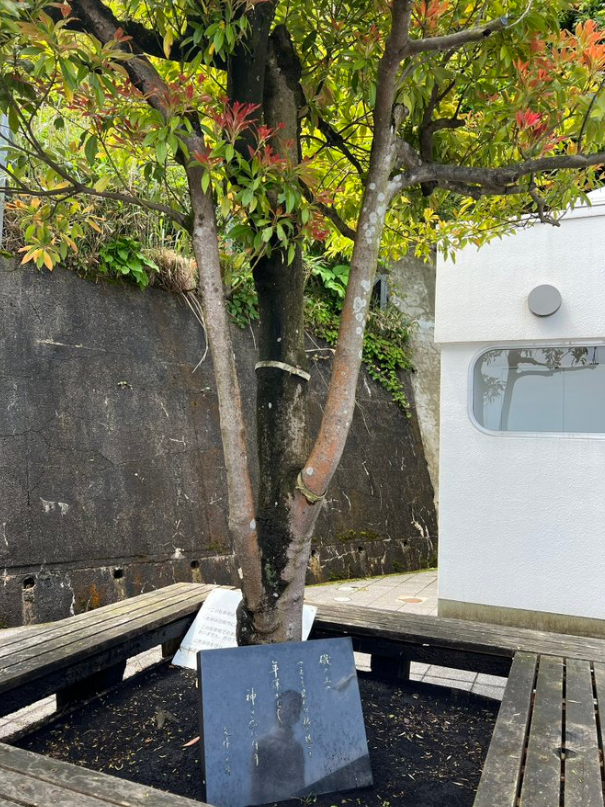




解説
Commentary
都万麻(つまま)
『万葉集』の4159番の歌。『万葉集』は、7世紀前半から8世紀後半にかけての約130年間の歌を収めた現存日本最古の歌集で、4500首余りの歌が収められている。この歌の作者は大伴家持(718?~785)、『万葉集』でも最も多くの歌を残す歌人である。
これは、家持が出挙・稲を貸し付けて収穫後に利息とともに返済させる政策)の業務で旧江村現在の氷見市南部)に向かう途中、渋谿の崎で木を見て詠んだ歌。歌の前にある題詞の意味は次の通りで、木の名前について家持自身が注釈を付けている。
渋谿の崎を通り過ぎる際、磯の上に立つ木を見た時の歌一首(その木の名は「つまま」である)。
「つまま」はクスノキ科タブノキ属の常緑高木で、大きいものは高さ20メートル以上にもなる。家持が見た「つまま」も大岩を抱くように根を伸ばした大きな木だったはずだ。その様に神々しさ(「神さびにけり」)を感じ取ったからこそ、「年深からし」と推量するのである。家持自ら「樹の名は「都万麻」」と説明を付けているように、「つまま」は都人にとっては聞き慣れない植物名だったのだろう。このように家持が自ら注を付けてまで歌に詠み込んだ例は、他にも「東風」(巻17・4017)や「脚付」(巻17・4021)がある。こうした例からは、この地方の珍しい風物に対する家持の関心の高さが垣間見える。
この歌はとてもシンプルではあるものの、古代日本から現代まで受け継がれている八百万の神やすべての物に神が宿るとみなす信仰観がよく表れていると思う。
この歌の歌碑は高岡市内のつまま小公園、道の駅雨晴旧観光駐車場など、富山県内に数基ある。中でもつまま小公園にある歌碑は、県内の万葉歌碑としては二番目に古い、安政五年(1858)の建碑である。
(解説 ピーター・J・マクミラン)
Photo : Hideaki Miyakoshi “God’s Tree” Tne Great Inukusu(tabunoki) at Nagasaka, Himi, Toyama Prefecture
長坂の大いぬくす(氷見市ホームページ)The Great Inukus of Nagasaka (Himi City Website)
This is poem number 4159 of the Man’yōshū, the oldest existing collection of poetry in Japan. The Man’yōshū consists of over 4,500 poems and was compiled over a period of around 130 years, from the first part of the 7th century to the latter part of the 8th century. The author of this poem is Ōtomo no Yakamochi.
This poem was composed at Shibutani Cape in praise of an ancient tree. Ōtomo no Yakamochi wrote the poem as he journeyed to Furue Village (the south part of present-day Himi City), on his way to collect rice and the interest accrued on loans for rice production as part of his duties as a provincial administrator. The preface contains the following description: “The poem was composed upon seeing a tree on the beach while passing by Cape Shibutani. The tree’s name is tsumama.”
The tsumama tree is an evergreen Japanese bay tree (tabunoki) in the family Lauraceae that can grow to a height of 20 meters. The tsumama that Yakamochi saw must have been a large tree, with its roots wrapped around an impressively proportioned rock. The venerable tree must have appeared divine to the poet, and in his simple poem he expresses well the ancient Japanese belief, still widely shared today, that gods exist everywhere and that there is a divinity in all things.
In the poem, the poet deliberately uses the local name for the tree—tsumama—which would have been unfamiliar to people living in the capital. The use of the local name is a way of honoring and celebrating the local culture and is evidence of Yakamochi’s deep affection for the area surrounding his second home. The same name is used in the translation.
Several monuments have been erected in Toyama Prefecture to celebrate this poem. The one in Tsumama Park in Takaoka City’s Ota area was constructed in 1858 and is the second oldest Man’yō waka poem monument in Toyama Prefecture.
(English Translation and Commentary by Peter Macmillan)